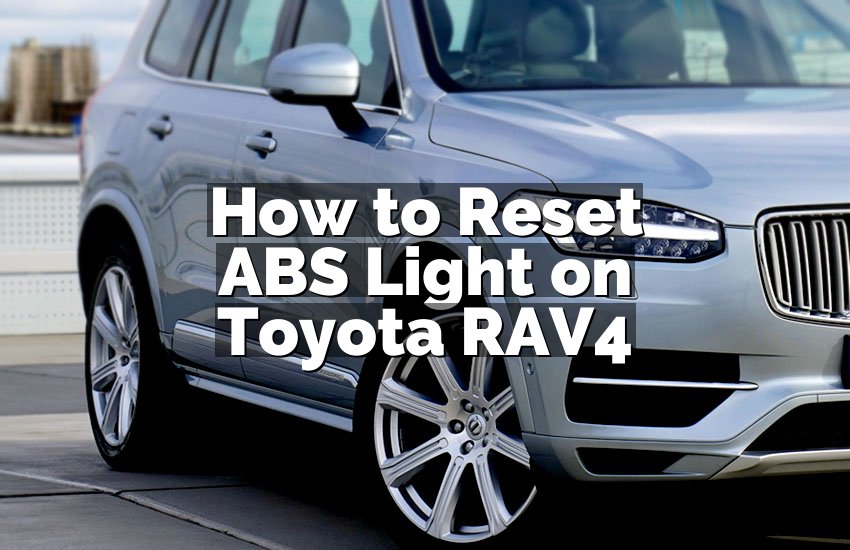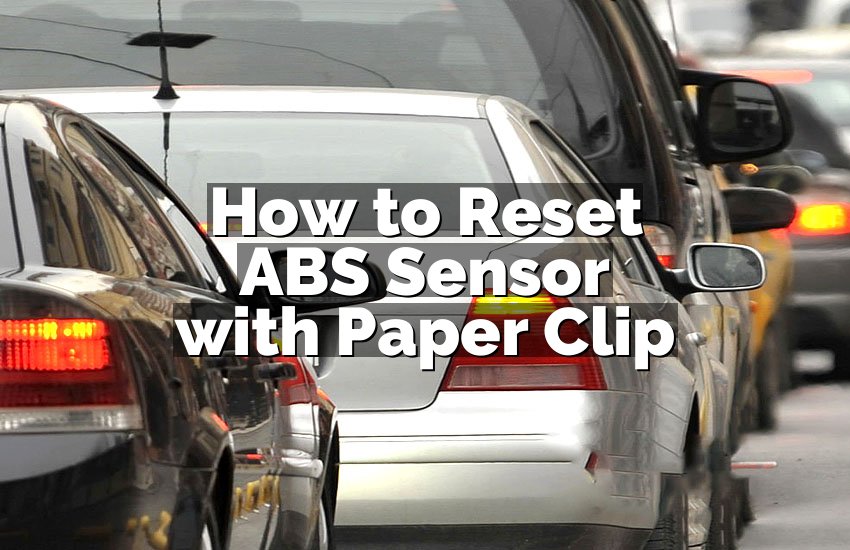To start a car with a bad crankshaft sensor, consider bypassing the sensor temporarily to ignite the engine. First, locate the crankshaft sensor in your vehicle, then disconnect it and jump-start the car.
Remember, this is a temporary solution and the sensor should be replaced by a professional as soon as possible to avoid long-term damage to the engine. When your car’s crankshaft sensor fails, it can be a frustrating situation that leaves you stranded.
However, understanding how to temporarily bypass the sensor can help you get back on the road in the short term. In this brief guide, we will outline the steps you can take to start your car with a bad crankshaft sensor and provide some insights on why it’s crucial to replace the sensor promptly. Let’s dive in.

Credit: www.wikihow.com
Signs Of A Bad Crankshaft Sensor
A crankshaft sensor plays a crucial role in the functioning of your car’s engine. It detects the position and rotational speed of the crankshaft, providing vital information to the engine control unit. When the crankshaft sensor is faulty or malfunctioning, it can lead to a range of issues that affect the performance and reliability of your car. Recognizing the signs of a bad crankshaft sensor can help you diagnose and address the problem before it leads to more serious damage.
Engine Misfires
One of the telltale signs of a bad crankshaft sensor is engine misfires. When the sensor fails to send accurate data about the crankshaft’s position and speed, it can disrupt the timing of the fuel injections and spark plugs. As a result, you may experience random misfires, causing your engine to run unevenly or roughly. This can lead to decreased power, poor fuel efficiency, and increased emissions.
Difficulty Starting The Car
If you find it increasingly difficult to start your car, a faulty crankshaft sensor could be to blame. The sensor provides the necessary information for the engine control unit to determine the exact timing of the ignition process. When the sensor fails, the engine may not receive the correct timing signal, causing difficulty in starting the car. You may notice extended cranking periods, multiple attempts to start the engine, or even complete failure to start.
Stalling While Driving
Another common sign of a bad crankshaft sensor is stalling while driving. As the sensor fails to accurately monitor the crankshaft’s position and speed, it can disrupt the ignition and fuel injection timing. This inconsistency can cause the engine to suddenly shut off while you’re driving. Stalling can be dangerous, particularly in situations where you need to maintain control of your vehicle. If you notice frequent stalling episodes, it’s crucial to have your crankshaft sensor checked and replaced if necessary.
If you suspect a bad crankshaft sensor based on these signs, it’s essential to consult a professional mechanic. They can perform a diagnostic test to accurately identify the issue and provide suitable solutions. Ignoring a faulty crankshaft sensor can lead to further engine damage and costly repairs. By addressing the problem promptly, you can ensure the smooth and reliable operation of your car’s engine.

Credit: www.way.com
Diagnosing A Bad Crankshaft Sensor
A bad crankshaft sensor can cause various issues with starting a car. Diagnosing the problem is crucial for effective repairs. Here are some methods to help diagnose a bad crankshaft sensor:
Using A Diagnostic Scanner
An effective way to diagnose a bad crankshaft sensor is by using a diagnostic scanner. This tool can read error codes and provide valuable insight into the functionality of the sensor.
Inspecting The Sensor
Inspecting the physical condition of the crankshaft sensor is essential. Look for any signs of damage or wear that could indicate a malfunction. Additionally, check for proper positioning and secure mounting.
Testing The Sensor’s Electrical Connection
Another important step is to test the electrical connection of the crankshaft sensor. Ensure that the wiring is in good condition and that there are no loose or damaged connections. A multimeter can be used to measure the sensor’s electrical output.
Preparing To Start A Car With A Bad Crankshaft Sensor
To start a car with a bad crankshaft sensor, try tapping the sensor gently to help it engage temporarily. Alternatively, consider jump-starting the vehicle to bypass the sensor and get the engine running. Remember to address the underlying issue promptly for long-term reliability.
Ensuring Safety
Always prioritize safety as you prepare to start a car with a faulty crankshaft sensor.
Disconnect the battery to avoid any electrical mishaps while working on the vehicle.
Gathering Necessary Tools
Be sure to gather the required tools before attempting to start the car with the bad sensor.
- Socket wrench set
- Multimeter for electrical testing
- Replacement sensor (if needed)
Starting A Car With A Bad Crankshaft Sensor
Starting a Car with a Bad Crankshaft Sensor
If you find yourself in a situation where your car has a bad crankshaft sensor, there are steps you can take to start the vehicle. The crankshaft sensor plays a vital role in the ignition process, so when it malfunctions, starting the car can be tricky. Follow these simple steps to start your car with a bad crankshaft sensor:
Step 1: Turn Off All Accessories
Ensure all accessories such as lights or radio are turned off before attempting to start the car.
Step 2: Insert The Key Into The Ignition
Place the key into the ignition slot to prepare for starting the car.
Step 3: Turn The Key To The ‘on’ Position
Turn the key to the ‘on’ position to activate the car’s electrical system.
Step 4: Wait For The Warning Lights To Turn Off
Allow the warning lights on the dashboard to turn off, indicating the car is ready to start.
Step 5: Turn The Key To The ‘start’ Position
Once all warning lights are off, turn the key to the ‘start’ position to ignite the engine.
Precautions And Limitations
When it comes to dealing with a bad crankshaft sensor in a car, it’s crucial to be aware of certain precautions and limitations. Taking the right measures can help you navigate this challenge effectively and ensure the safety of both yourself and your vehicle.
Possible Risks Involved
When attempting to start a car with a faulty crankshaft sensor, there are potential risks to consider. Starting the vehicle in this condition may lead to erratic engine behavior, stalling, and potential damage to other engine components. It’s important to proceed with caution and be prepared for unexpected outcomes.
Temporary Solution
If you find yourself in a situation where the vehicle needs to be started despite a bad crankshaft sensor, a temporary solution involves manually providing the engine’s ignition system with the necessary signals. This can be done through professional assistance or utilizing alternative starting methods discussed in the vehicle’s manual.
Seek Professional Assistance
It’s vital to remember that attempting to start a car with a faulty crankshaft sensor is a temporary solution. To address the underlying issue and ensure the long-term health of your vehicle, seeking professional assistance is crucial. A trained mechanic can diagnose and replace the faulty sensor, restoring your car’s proper functionality and safety.
Temporary Fixes For A Bad Crankshaft Sensor
When your car’s crankshaft sensor is faulty, it can create various issues, including starting problems. However, there are a few temporary fixes you can try to get your car started until you can replace the sensor. In this article, we will discuss three possible solutions that may help you start a car with a bad crankshaft sensor: checking for loose or damaged connections, cleaning the sensor, and moving the sensor closer to the crankshaft.
Check For Loose Or Damaged Connections
If your car’s crankshaft sensor is not performing optimally, it is essential to check for any loose or damaged connections. Faulty connections can disrupt the sensor’s ability to communicate with the engine control unit, leading to starting issues. To ensure all connections are secure, follow these steps:
- Start by carefully inspecting the wiring harness connected to the crankshaft sensor.
- If you notice any loose or corroded connections, gently tighten or clean them using a soft brush and electrical contact cleaner.
- Make sure all wiring connections are properly seated and securely fastened.
- It is also a good idea to check the connections on the engine control unit (ECU) and secure them if necessary.
Clean The Sensor
A dirty or contaminated crankshaft sensor can contribute to starting issues. Cleaning the sensor might help in such cases. Here’s how you can clean the crankshaft sensor:
- Locate the crankshaft sensor, which is typically positioned near the crankshaft pulley.
- Disconnect the sensor from its wiring harness, following the manufacturer’s instructions.
- Using a gentle stream of electrical contact cleaner or sensor-safe cleaner, spray the sensor to remove any dirt, debris, or oil buildup.
- Allow the sensor to air dry completely before reconnecting it to the wiring harness.
Move The Sensor Closer To The Crankshaft
In some cases, the distance between the crankshaft sensor and the crankshaft itself may cause starting issues. By moving the sensor closer to the crankshaft, you might be able to improve its performance temporarily. Follow these steps:
- Identify the mounting location of the crankshaft sensor.
- Loosen the mounting bolts or screws that secure the sensor in place.
- Gently move the sensor closer to the crankshaft, ensuring it does not touch or interfere with any moving parts.
- Tighten the mounting bolts or screws to hold the sensor securely in its new position.
It is important to note that these temporary fixes may not solve the underlying problem with your crankshaft sensor. While they can help you start the car in the short term, it is recommended to seek professional assistance as soon as possible to replace the faulty sensor and ensure proper engine functionality.
Long-term Solutions For A Bad Crankshaft Sensor
If you’re facing issues with a bad crankshaft sensor in your car, it’s crucial to address the problem promptly for a smooth driving experience. Fortunately, there are effective long-term solutions to consider. In this article, we will discuss two key approaches: replacing the sensor and seeking professional assistance.
Replace The Sensor
If you possess the necessary automotive skills and tools, you can replace the faulty crankshaft sensor on your own. Here’s a step-by-step guide:
- Begin by locating the sensor. It is typically positioned near the engine’s crankshaft, often behind or next to the harmonic balancer.
- Disconnect the negative battery cable to ensure safety during the replacement process.
- Once you have access to the sensor, carefully detach the electrical connector that connects it to the wiring harness.
- Next, remove any bolts or screws securing the sensor in place. Use the appropriate tools and take caution not to damage any surrounding components.
- Gently pull out the old sensor and set it aside.
- Before installing the new sensor, clean the area where it will be inserted to ensure a secure fit.
- Insert the new sensor into the designated spot and fasten it tightly with the bolts or screws.
- Reconnect the electrical connector and reattach the negative battery cable.
- Start your car and check if the issue persists. If not, you have successfully replaced the faulty crankshaft sensor!
Remember to consult your car’s manual and research specific instructions for your vehicle model to ensure accuracy during the replacement process.
Seek Professional Assistance
If you’re uncertain about replacing the crankshaft sensor yourself or lack the necessary tools, seeking professional assistance is a wise choice. Automotive experts possess the expertise and equipment to handle the task effectively. Here are the steps to follow when seeking professional assistance:
- Research reputable auto repair shops or certified mechanics in your area. Online reviews and recommendations can be helpful in making your choice.
- Contact the selected professionals and inquire about their experience with crankshaft sensor replacements.
- Explain the issues you’re facing and ask for an estimated cost and timeline for the repair.
- Once you have gathered information from multiple sources, compare and select the most suitable professional or service provider for your needs.
- Schedule an appointment to have your car diagnosed and the crankshaft sensor replaced by the chosen professional.
- Before finalizing the repair, ensure that you understand the warranty terms, cost breakdown, and any other relevant details.
By opting for professional assistance, you gain peace of mind knowing your car is in capable hands, and the problem will be effectively resolved.
Credit: www.nevsemi.com
Importance Of Regular Maintenance
Regular maintenance of a vehicle is crucial for ensuring its optimal performance and longevity. Ignoring maintenance can lead to various issues, including a faulty crankshaft sensor, which can significantly impact the starting of the car. Regular maintenance not only helps in preventing unexpected breakdowns but also ensures the safety of the driver and passengers.
Regular Sensor Inspection
As part of regular maintenance, it is essential to inspect the crankshaft sensor at regular intervals. This involves checking for any signs of wear, damage, or malfunction. Regular sensor inspection can help in early detection of potential issues and prevent them from escalating into major problems that could affect the starting of the car.
Other Components To Check
In addition to the crankshaft sensor, several other components in the car play a vital role in ensuring smooth starting. These include the battery, spark plugs, and fuel system. Regularly checking and maintaining these components is essential to avoid any issues that could arise due to their malfunction.
Conclusion
Dealing with a bad crankshaft sensor can be a frustrating experience for any car owner. However, by following the mentioned methods and tips, you can still start your car and get it to a professional for further diagnosis and repair.
Remember to prioritize safety and seek expert assistance when needed. With the right approach, you can tackle this issue effectively.


